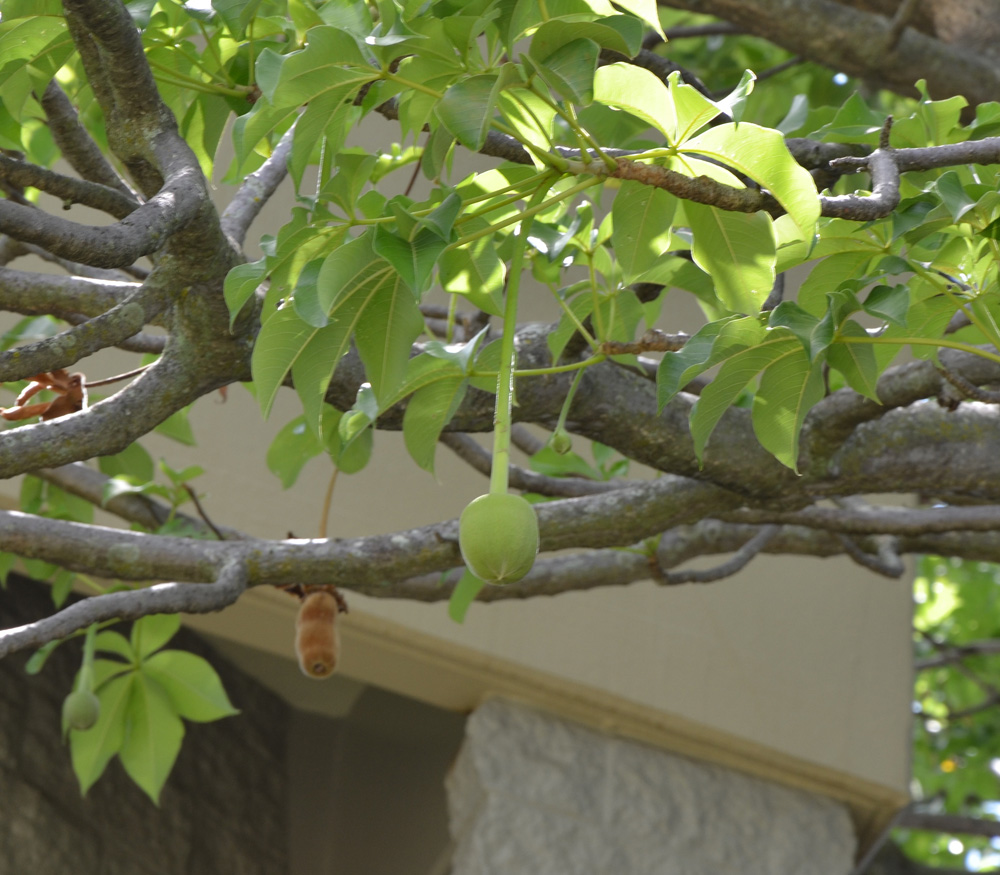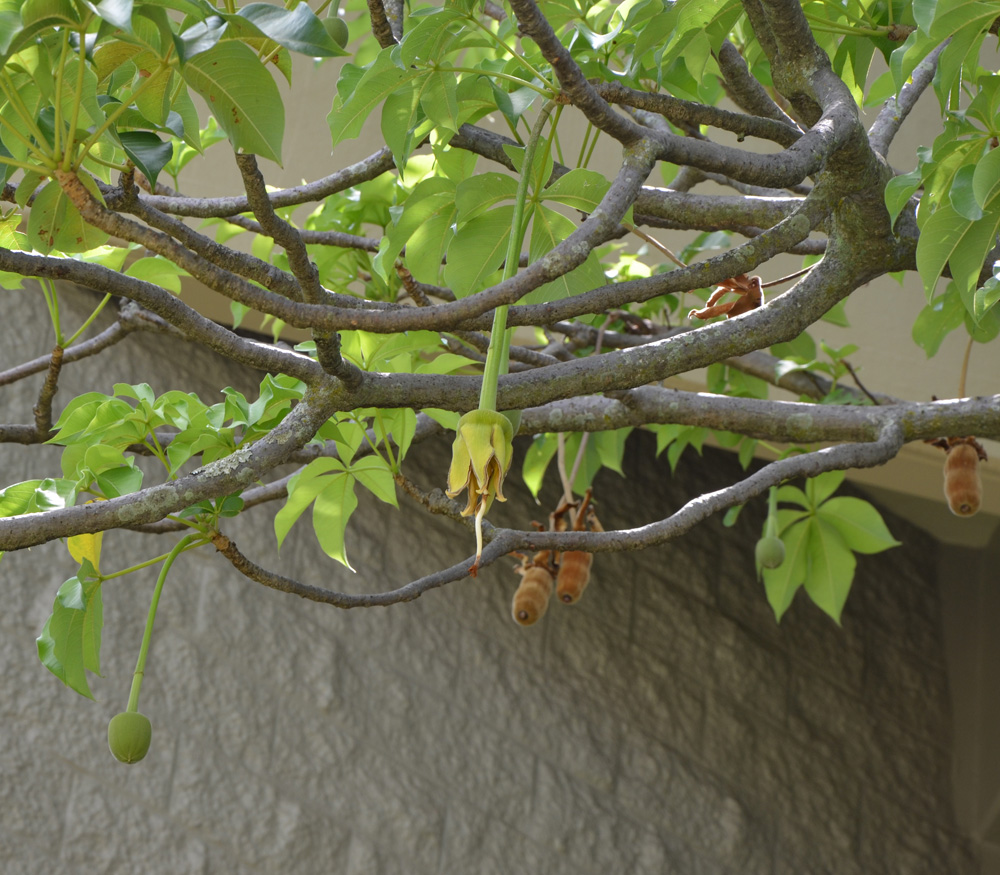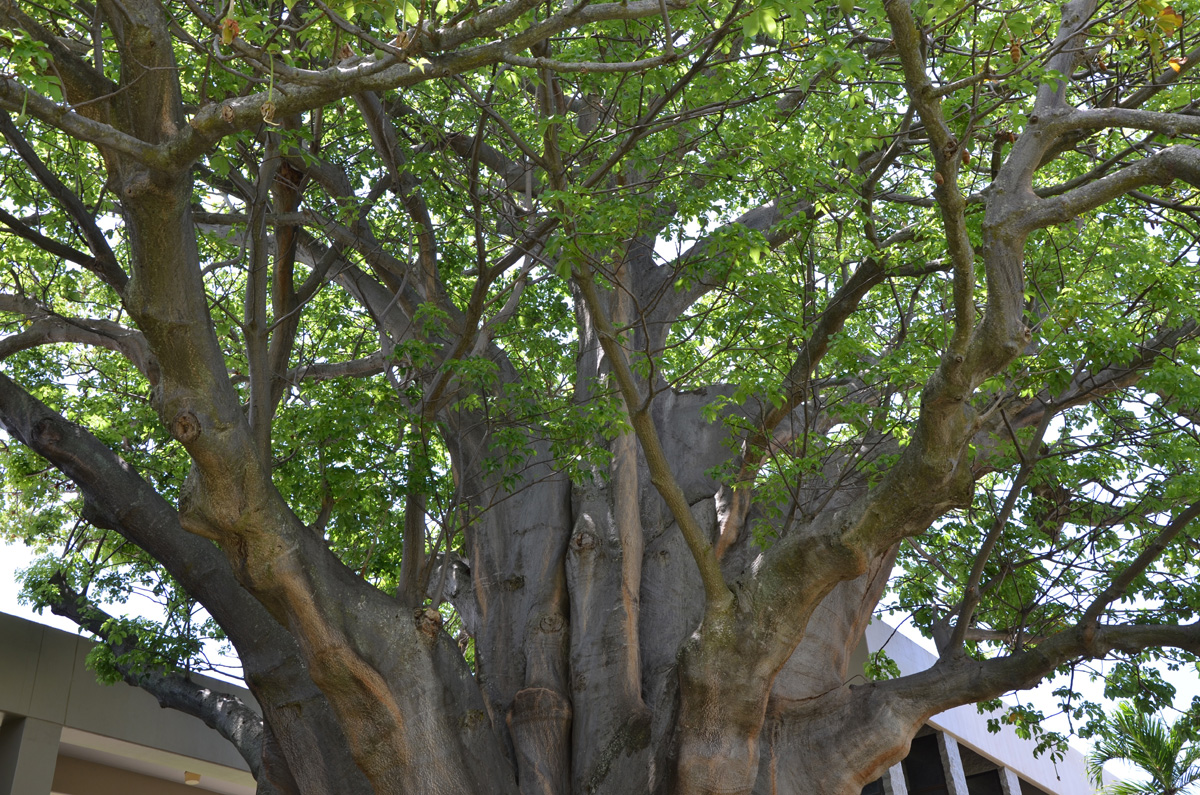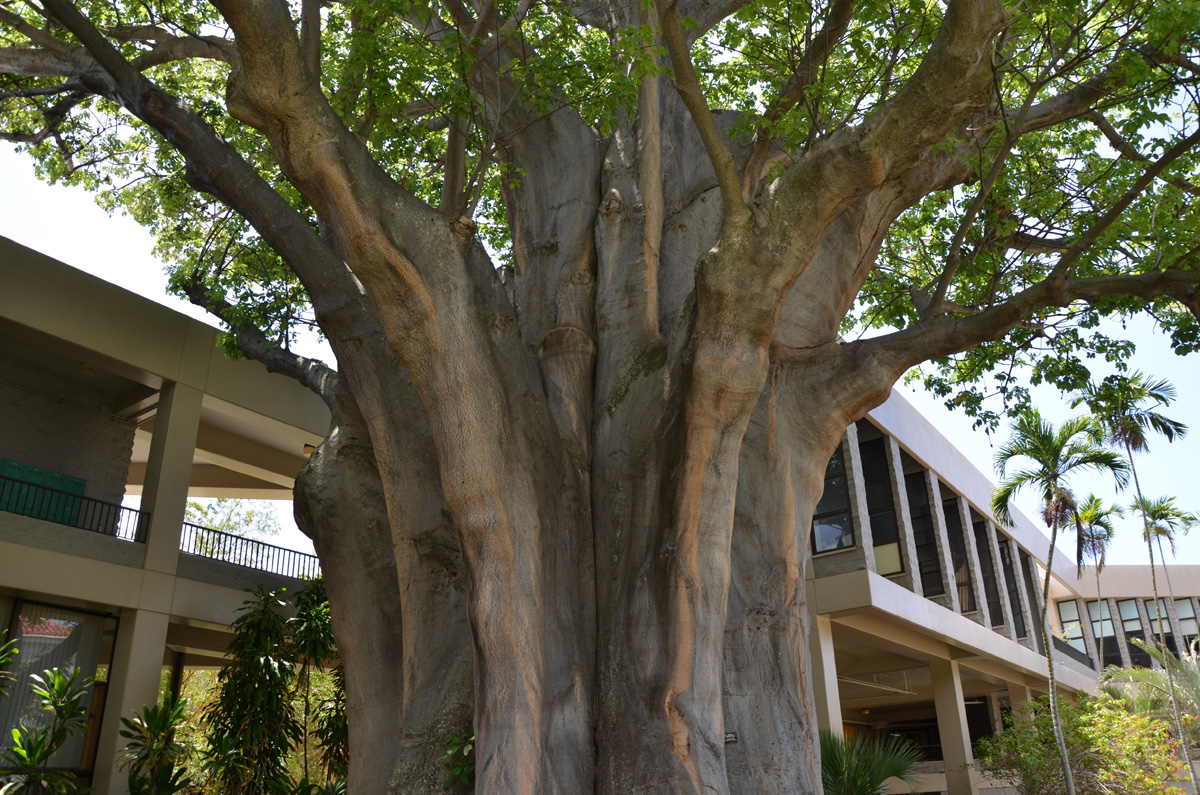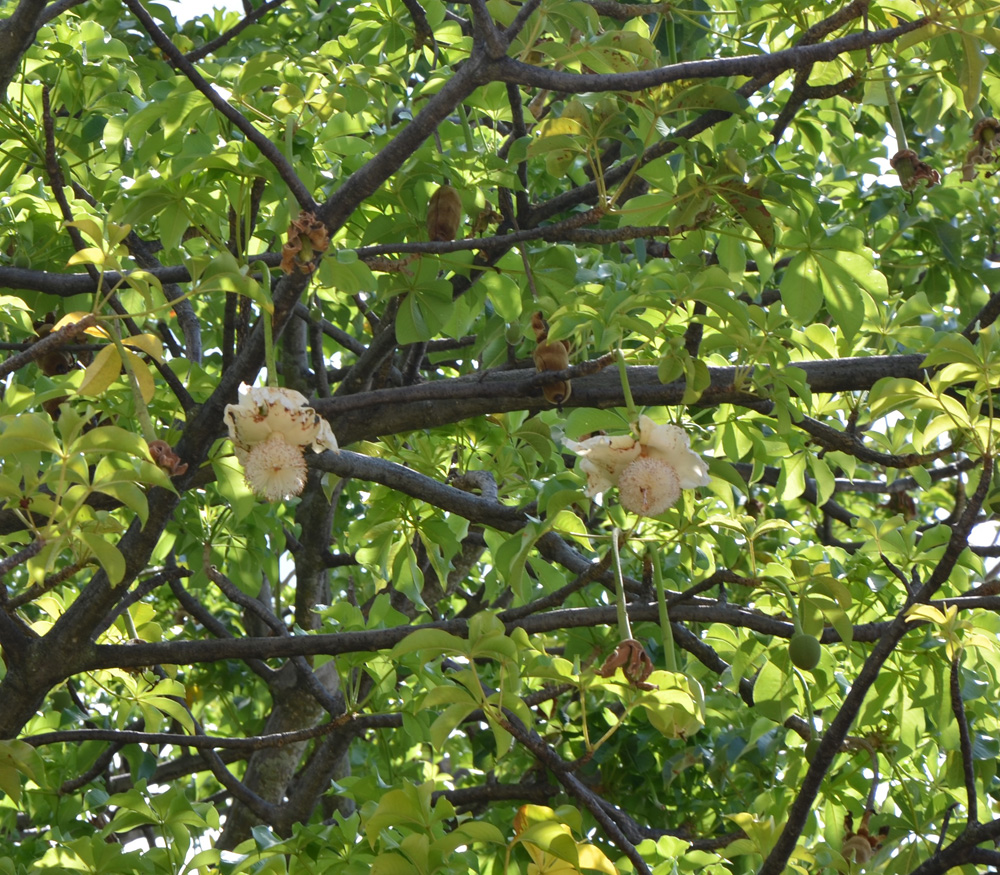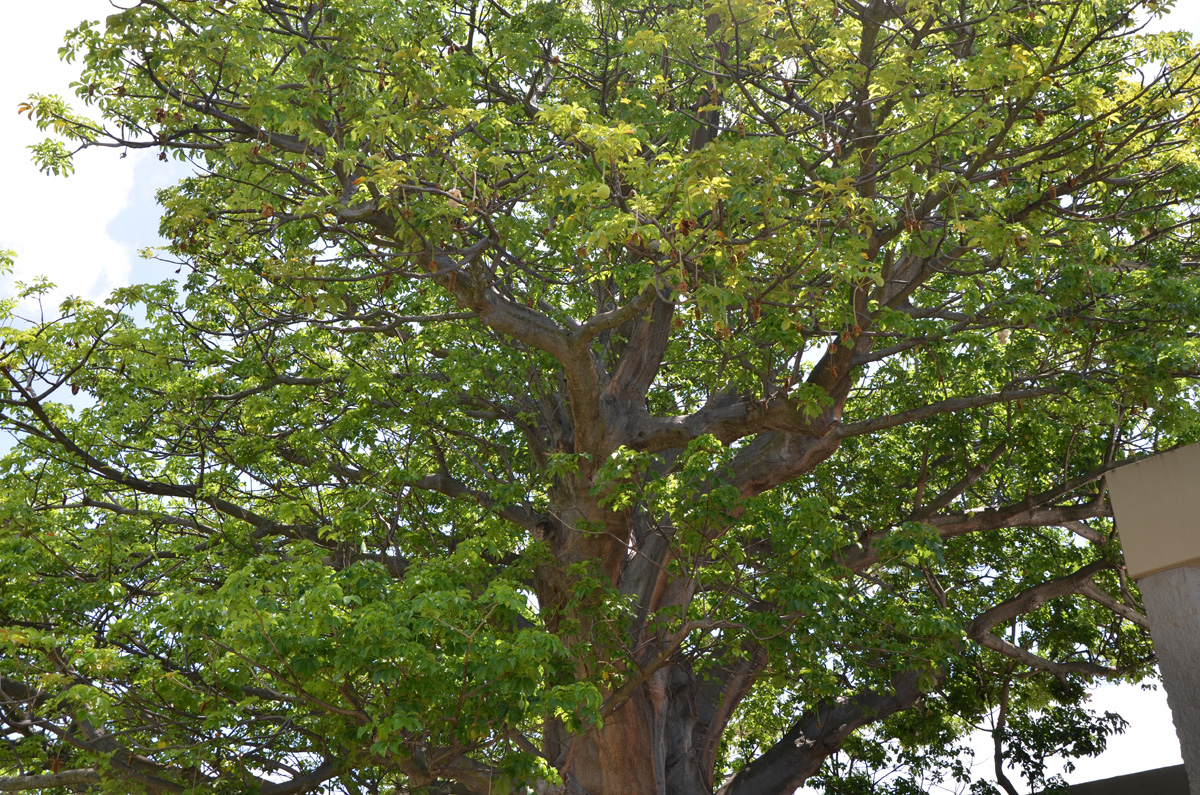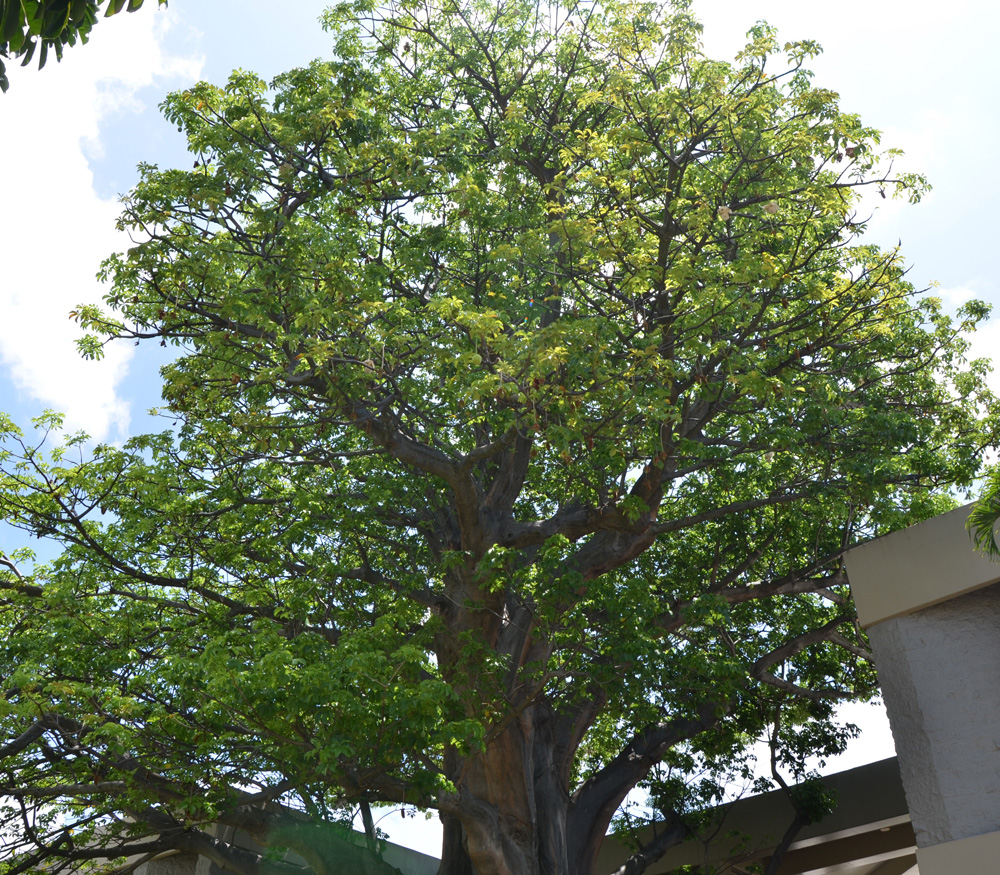- Home »
- Information »
- Baobab
Baobab
Adansonia digitata
A strange and famous tree of the African savanna. The Baobab is recognizable both for its huge trunk, one of the largest in circumference of all tree species and for its distinct profile, that along with the Acacia, defines the savanna flora.
Seed Availability
Seeds are now available at our seed store.
Description
A medium to large tree reaching 50-75ft. The trunk can reach up to 50-80ft in girth! The scraggly branches that grow from the trunk create the appearance of a tree upside-down. Large white flowers, passingly reminiscent of a Camellia bloom in Fall. Flowers can reach 5-7" in diameter and smell or carrion, attracting their pollinators, fruit bats. Hard, egg-shaped fruits follow with an edible dry pulp that is reportedly high in vitamin C. Many wild Baobab trees have been dated to as much as 2000 years old.
Hardiness
Hardy to at least 30F, though trees will quickly defoliate and die back once temperatures drop below 40F.
Growing Environment
The baobab grows best in frost-free climates. Grow in well-drained soil. It is highly drought tolerant once established. Do not allow water-logged soil or standing water. Grow in full sun.
Propagation
By seeds. Soak in water for 24 hours prior to planting.
Uses
Grown as an ornamental for its strange beauty. The fruits are also edible and are used to make a drink that supposedly tastes like lemonade.
Native Range
Native throughout the savanna regions of sub-Saharan Africa.
Additional Pictures
Related Species
| Malvaceae | |||
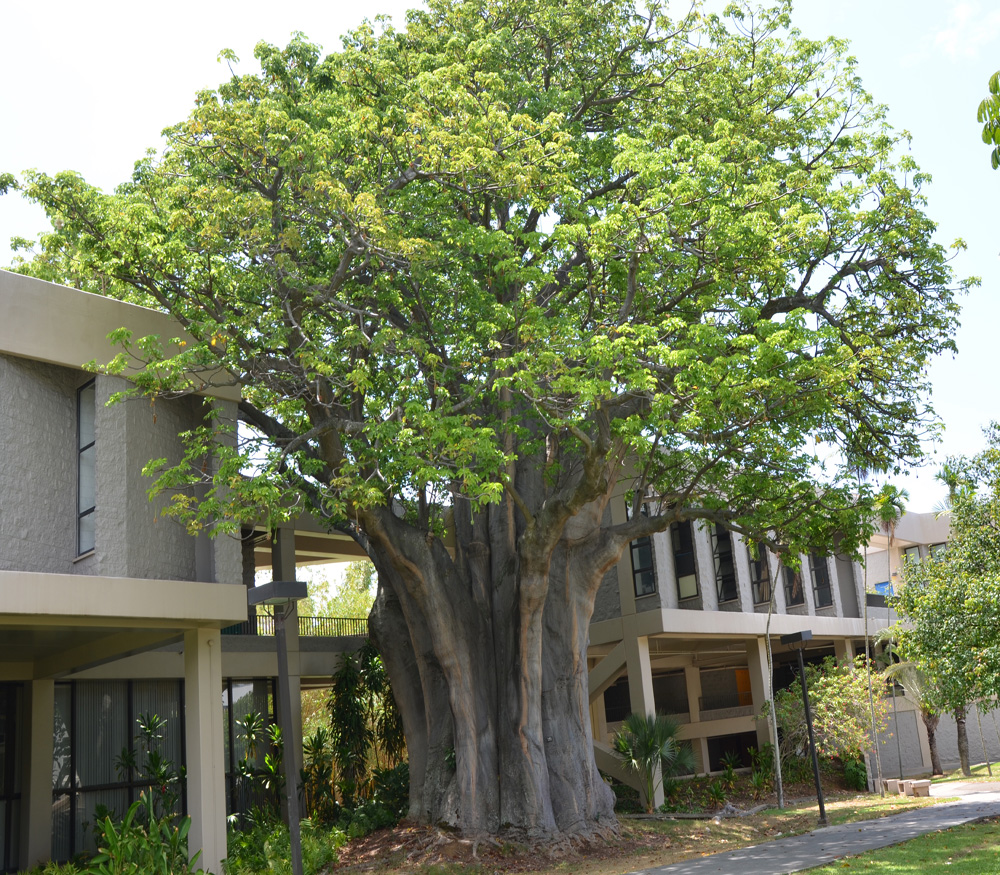 |
Adansonia digitata Baobab |
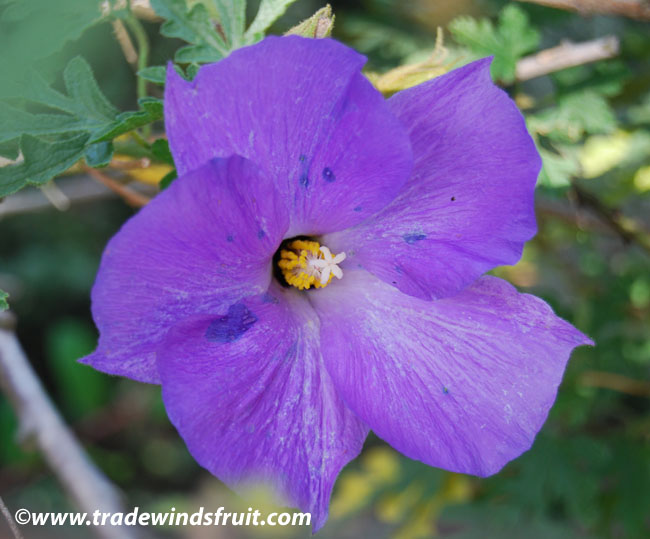 |
Alyogyne huegelii Blue Hibiscus |
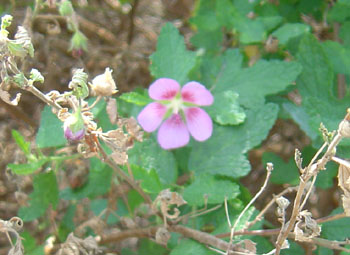 |
Ansiodontea x hypomandarum Cape Mallow |
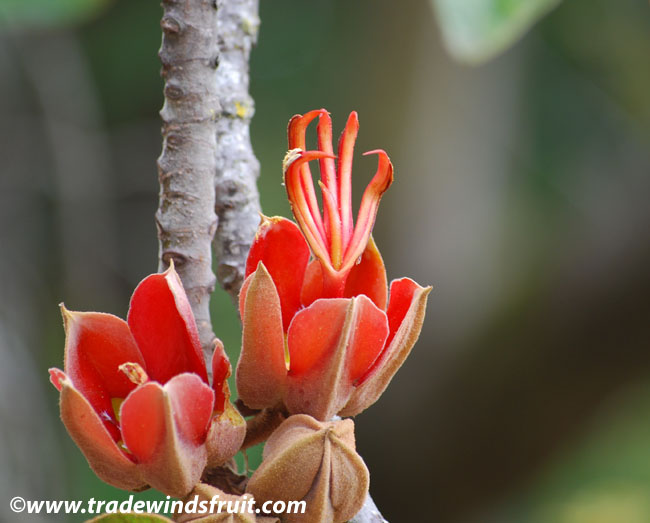 |
Chiranthodendron pentadactylon Mexican Hand Tree |
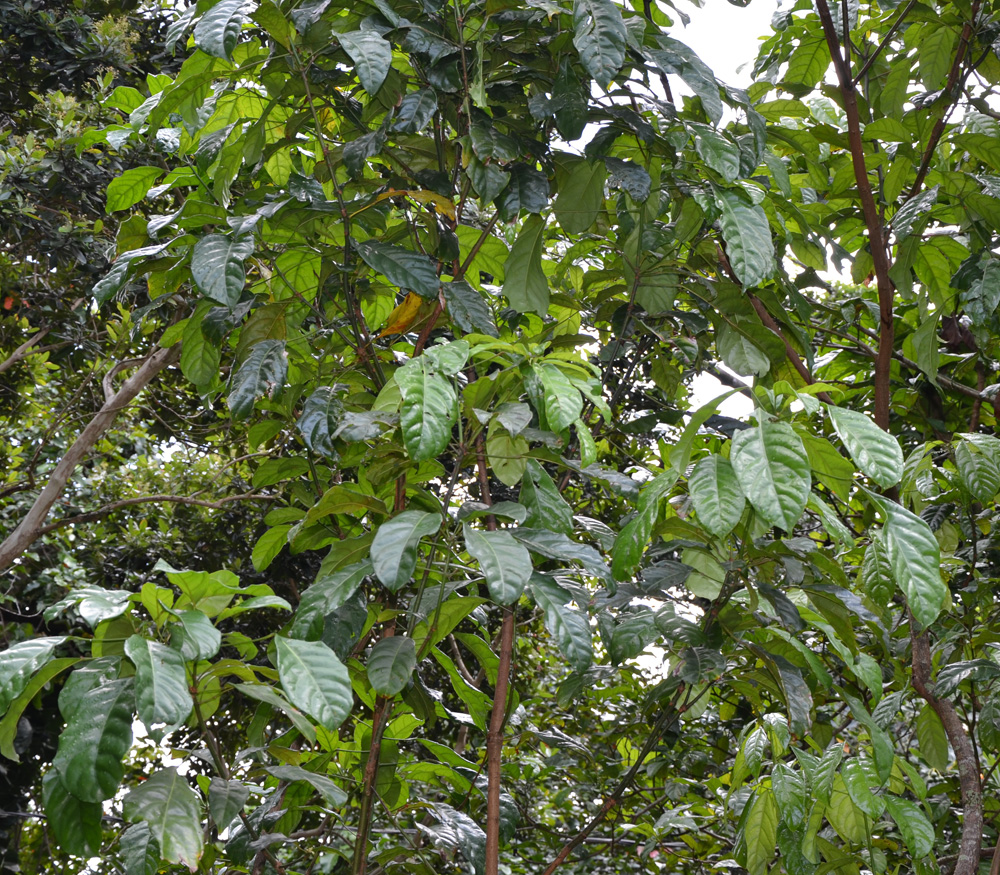 |
Cola acuminata Cola Nut |
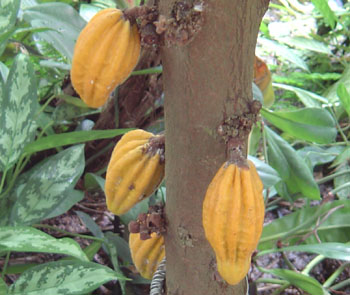 |
Herrania imbricata Monkey Cacao |
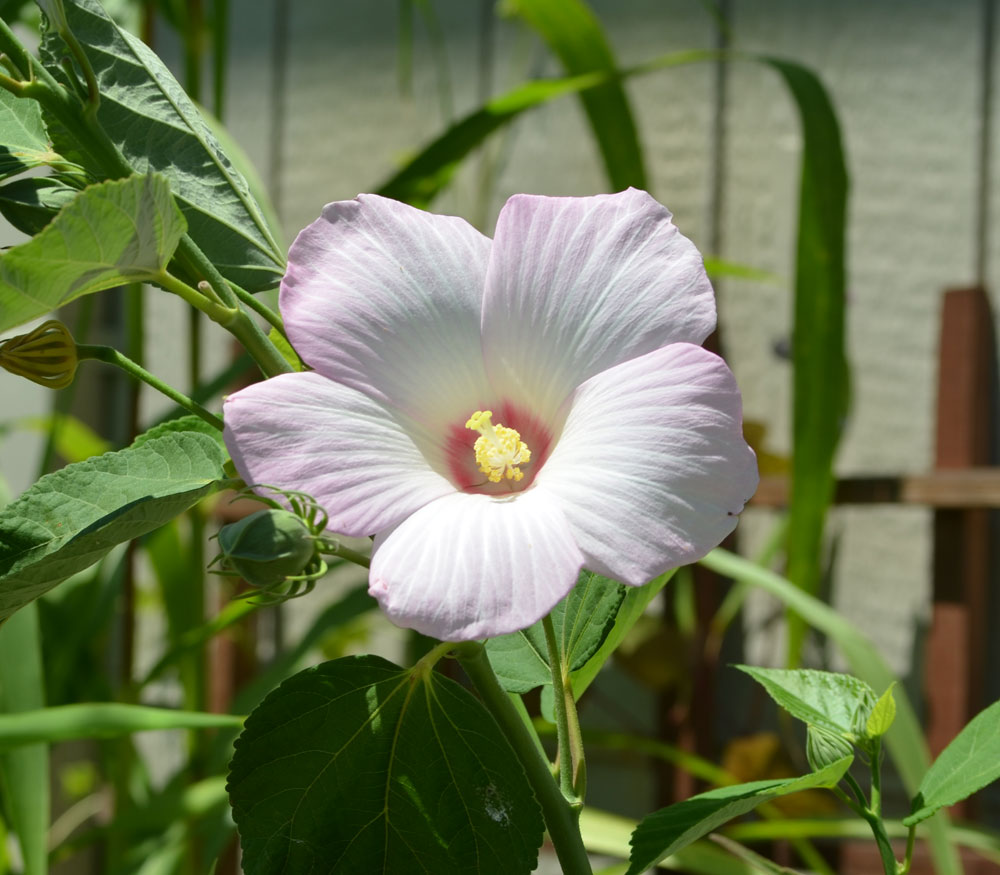 |
Hibiscus palustris Swamp Rose Mallow |
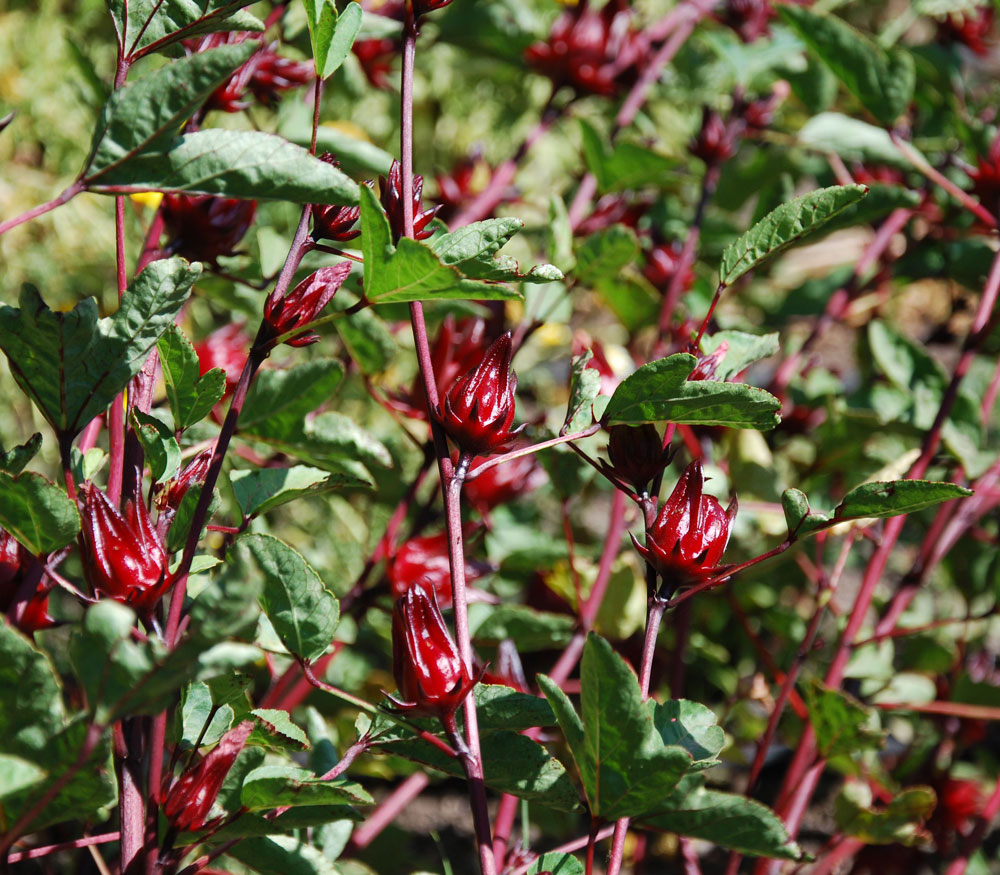 |
Hibiscus sabdariffa Roselle |
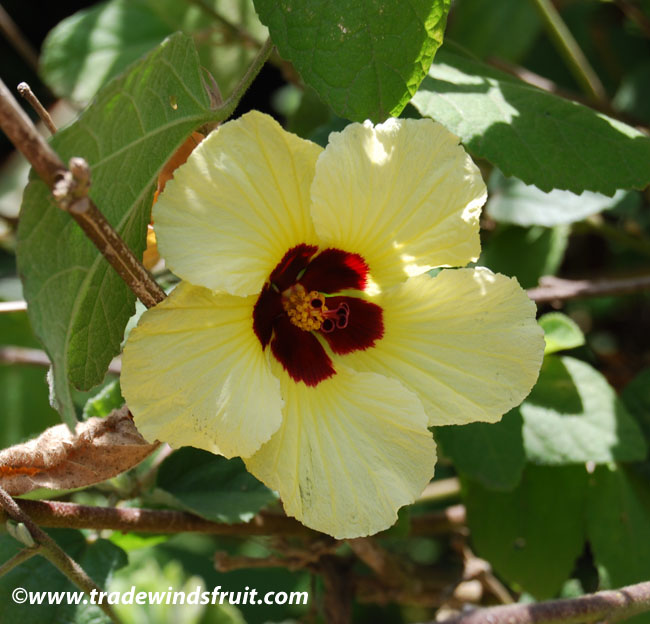 |
Hibiscus taiwanensis Cream Hibiscus |
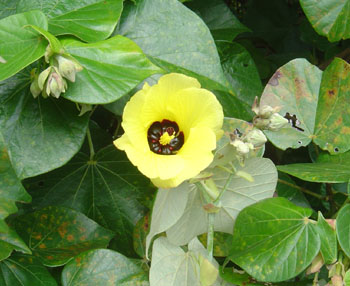 |
Hibiscus tiliaceus Beach Hibiscus |
 |
Theobroma bicolor Mocambo |
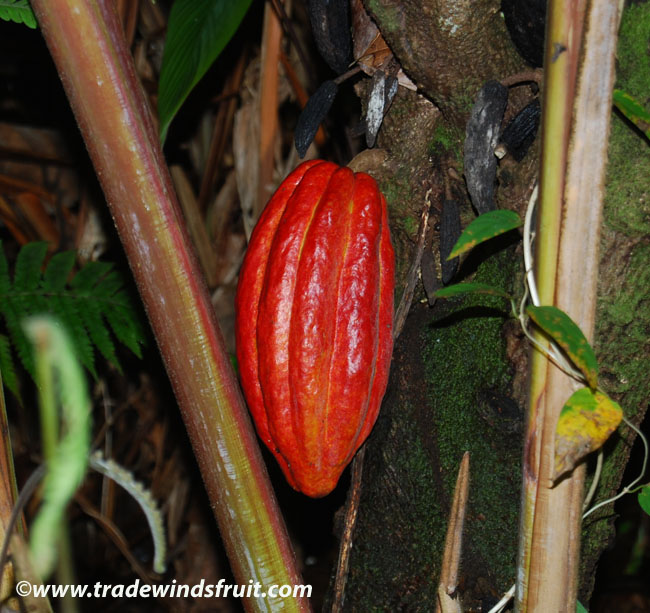 |
Theobroma cacao Cacao |
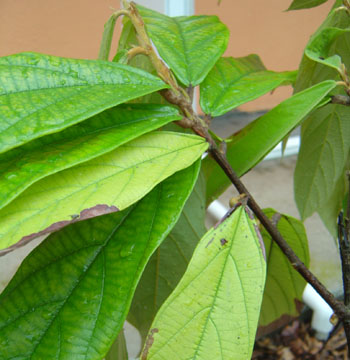 |
Theobroma grandiflorum Cupuassu |
 |
Theobroma speciosum Cacaui |
 |
Theobroma subincanum Cupui |


